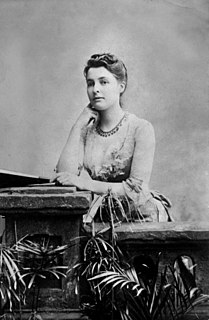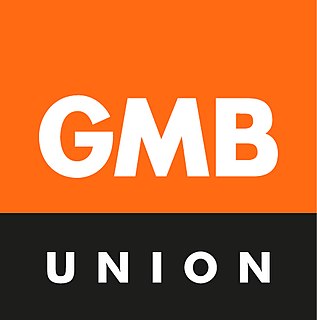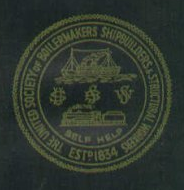Related Research Articles
A trade union is an association of workers forming a legal unit or legal personhood, usually called a "bargaining unit", which acts as bargaining agent and legal representative for a unit of employees in all matters of law or right arising from or in the administration of a collective agreement. Labour unions typically fund the formal organization, head office, and legal team functions of the labour union through regular fees or union dues. The delegate staff of the labour union representation in the workforce are made up of workplace volunteers who are appointed by members in democratic elections.

Sidney James Webb, 1st Baron Passfield, was a British socialist, economist, reformer and a co-founder of the London School of Economics. He was one of the early members of the Fabian Society in 1884, who like George Bernard Shaw joined three months after its inception. Along with his wife Beatrice Webb and with Annie Besant, Graham Wallas, Edward R. Pease, Hubert Bland and Sydney Olivier, Shaw and Webb turned the Fabian Society into the pre-eminent political-intellectual society in Edwardian England. He wrote the original, pro-nationalisation Clause IV for the British Labour Party.

Martha Beatrice Webb, Baroness Passfield,, was an English sociologist, economist, socialist, labour historian and social reformer. It was Webb who coined the term collective bargaining. She was among the founders of the London School of Economics and played a crucial role in forming the Fabian Society.

The GMB is a general trade union in the United Kingdom which has more than 631,000 members.

The Ceramic and Allied Trades Union (CATU) was a trade union representing pottery workers in the United Kingdom.
Owenism is the utopian socialist philosophy of 19th-century social reformer Robert Owen and his followers and successors, who are known as Owenites. Owenism aimed for radical reform of society and is considered a forerunner of the cooperative movement. The Owenite movement undertook several experiments in the establishment of utopian communities organized according to communitarian and cooperative principles. One of the best known of these efforts, which were largely unsuccessful, was the project at New Harmony, Indiana, which started in 1825 and was abandoned by 1829. Owenism is also closely associated with the development of the British trade union movement, and with the spread of the Mechanics' Institute movement.
New Model Trade Unions (NMTU) were a variety of Trade Unions prominent in the 1850s and 1860s in the UK. The term was coined by Sidney and Beatrice Webb in their History of Trade Unionism (1894), although later historians have questioned how far New Model Trade Unions represented a 'new wave' of unionism, as portrayed by the Webbs.

The Sheffield Trades and Labour Council, usually known as the Sheffield Trades Council, is a labour organisation uniting trade unionists in Sheffield.
The National Association of United Trades for the Protection of Labour was an early trade union federation in the United Kingdom.
John Doherty (1798–1854) was an Irish trade unionist, radical and factory reformer who devoted his life to political and social reform. He was born in Buncrana in Inishowen on the north coast of County Donegal in Ireland.

The Amalgamated Association of Operative Cotton Spinners and Twiners, also known as the Amalgamation, was a trade union in the United Kingdom which existed between 1870 and 1970. It represented male mule spinners in the cotton industry.
The Grand National Consolidated Trades Union of 1834 was an early attempt to form a national union confederation in the United Kingdom.

The Amalgamated Society of Boilermakers, Shipwrights, Blacksmiths and Structural Workers (ASB) was a trade union in the United Kingdom. Many of its members worked in shipbuilding, in which industry it was the leading trade union, while over time it also developed strength in engineering and construction.

The Irish Trades Union Congress (ITUC) was a union federation covering the island of Ireland.

The National Union of Boot and Shoe Operatives (NUBSO) was a trade union in the United Kingdom which existed between 1873 and 1971. It represented workers in the footwear industry.

The Amalgamated Weavers' Association, often known as the Weavers' Amalgamation, was a trade union in the United Kingdom. Initially, it operated in competition with the North East Lancashire Amalgamated Weavers' Association in part of its area, and it was therefore nicknamed the Second Amalgamation.
The Herald was a weekly trade union magazine published in Adelaide, South Australia between 1894 and March 1910; for the first four years titled The Weekly Herald. It was succeeded by The Daily Herald, which ran from 7 March 1910 to 16 June 1924.
The National Amalgamated Union of Shop Assistants, Warehousemen and Clerks was a trade union representing retail workers in the United Kingdom.
William Owen was a British trade unionist, journalist and political activist.
References
- ↑ Webb, Sidney; Webb, Beatrice (1894). History of Trade Unionism . London: Longmans Green and Co. pp. 120–124.
- ↑ Webb & Webb 1894, p. 122.
Further reading
- Address of the National Association for the Protection of Labour to the Workmen of the United Kingdom (4 pp. 1830), in Home Office Papers, 40-27.